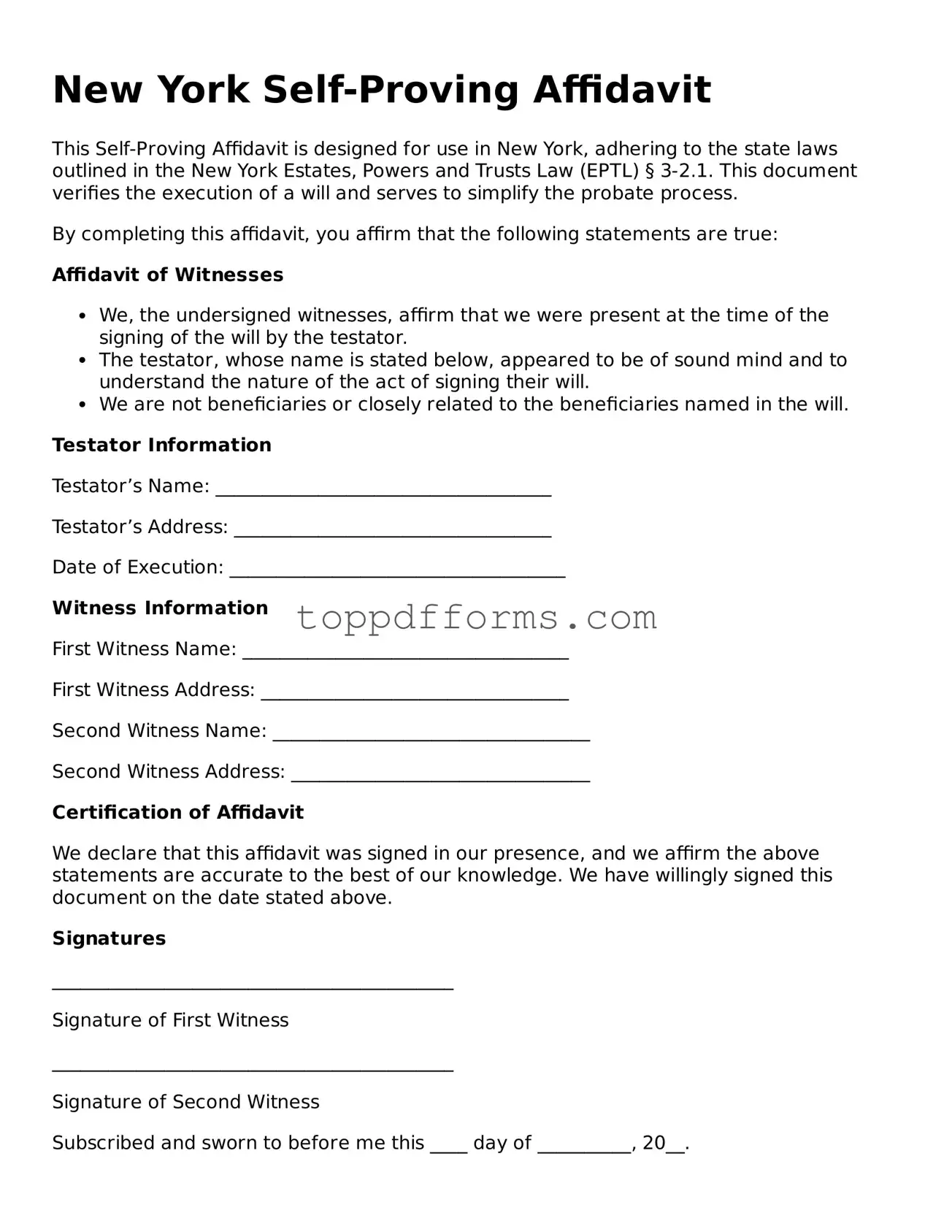Filling out the New York Self-Proving Affidavit form can be straightforward, but many individuals make common mistakes that can lead to complications. One frequent error is failing to properly identify the testator. It's essential to include the full name of the person who created the will. Omitting this detail can create confusion and may even invalidate the affidavit.
Another mistake is not having the correct number of witnesses. New York law requires at least two witnesses to sign the affidavit. If only one witness signs, the document may not hold up in court. Therefore, it’s crucial to ensure that both witnesses are present and sign the affidavit at the same time as the testator.
People often forget to include the date when the affidavit is signed. This detail is important because it establishes the timeline of events. Without a date, questions may arise about when the affidavit was executed, potentially affecting its validity.
Additionally, individuals may neglect to ensure that the witnesses are disinterested parties. In New York, witnesses should not be beneficiaries of the will. If a witness stands to gain from the will, it could lead to challenges regarding the will's legitimacy. Selecting impartial witnesses is a vital step in this process.
Some people also overlook the necessity of notarization. A Self-Proving Affidavit must be notarized to be valid. Failing to have a notary public witness the signatures can render the affidavit ineffective, making it essential to include this step.
Another common mistake is not providing sufficient details about the will itself. The affidavit should reference the will clearly, including its date and any relevant provisions. Lack of clarity can lead to disputes or confusion regarding the will's intentions.
Moreover, individuals sometimes use outdated versions of the form. Legal documents can change over time, and using an old form may lead to compliance issues. Always ensure that you are using the most current version of the Self-Proving Affidavit.
People may also rush through the form, resulting in incomplete information. Every section should be filled out carefully. Leaving blanks can raise questions about the affidavit's authenticity and may lead to legal challenges later on.
Lastly, many individuals fail to read the entire document before signing. Understanding the contents of the affidavit is crucial. Misinterpretations can lead to significant legal consequences, so taking the time to review the document thoroughly is advisable.
In summary, avoiding these mistakes when completing the New York Self-Proving Affidavit can help ensure that the document serves its intended purpose. Careful attention to detail can prevent future complications and provide peace of mind.
